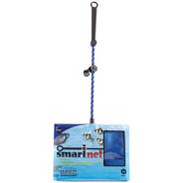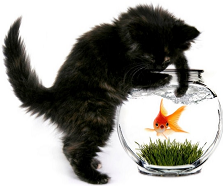Would you like your tank highlighted here??? Next time we come over to maintain your tank or pond take a picture and Email it to us!
We LOVE Testimonials!!! Send us an email for us to share on our Website!
Want to show off your favorite, or handsome, or smart or wild fish?? We would LOVE to! Send us a pic - We are saving the space on the right hand side for your favorite girl or guy. Don't forget to include his or her's name! You do give a name for all your fish don't you???
Maintenance
- Personalized service and maintenance programs
- We provide bi-weekly or monthly service visits.
Aquarium Maintenance includes :
Visual check of fish (head count, disease, breathing and swimming behavior).
Visual check on health of corals and invertebrates.
Remove algae from glass and internal structures.
Test water parameters.
Perform specialized tests when necessary.
Diagnose disease and take steps to medicate.
Change water
Add or leave Top Off Water R.O.D.I.
Deliver purchased goods; food, fish, carbon, supplies, supplements, etc.
Clean or replace filter media, carbon, and protein skimmer.
Remove debris and clean floor of tank.
Visual check of equipment, air, and water flow.
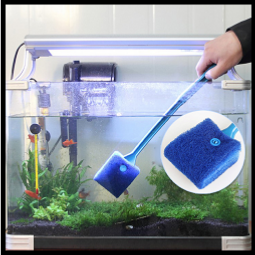

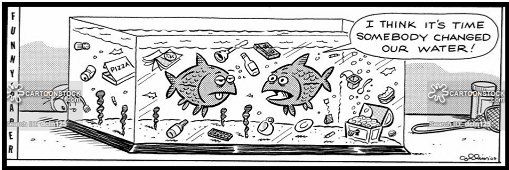
Are saltwater aquariums more difficult to care for than freshwater aquariums?
There is a common misconception that saltwater aquariums are more difficult to keep than freshwater aquariums. Although there is some more work associated with successfully keeping a saltwater aquarium, it is not that much more difficult than keeping a freshwater aquarium.
The key to a healthy and enjoyable saltwater aquarium is to set up the aquarium correctly in the first place with proper filtration, animals that are best suited to the environment you wish to create and that are healthy and quarantined before being introduced to the aquarium, and the feeding of a proper diet.
A saltwater tank can be fun, educational, and a beautiful centerpiece in your home or office.
Indoor and Outdoor Pond Maintenance
We can perform maintenance and service on your existing pond, consult
on the construction of a new pond, and stock your pond.
Scheduling to fit your needs and lifestyle
Spring "start up" and fall "shut down" pond service/cleaning
Ordering and delivery of fish and plants for your pond
Health assessment and treatment
Water testing to ensure the healthiest environment
Equipment installation, maintenance, and troubleshooting
State-of-the-art equipment and supplies
Professional & knowledgeable service personnel
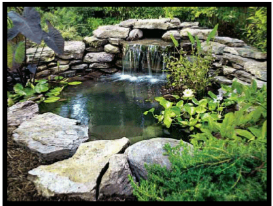



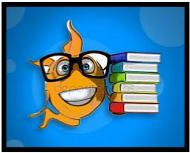


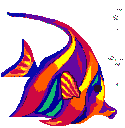












Care for Your Reef Tank
Your coral reef aquarium, if maintained properly, will perfectly display your marine invertebrates and fish. Just follow these reef tank care tips:
Water Quality: The water should be tested to ensure it is maintaining the proper alkalinity, pH, and calcium levels for coral. Use a test kit regularly to determine these levels so you can provide your marine life with the healthiest environment possible.
Reef Tank Lighting Conditions: Since corals require light to produce food, lighting is an important element of your tank. The proper spectrum, intensity, and duration can be provided by fluorescent light tubes, halide bulbs, or LED systems. Depending on the coral type in your tank, it may require low light (one to two watts of light per gallon of water), moderate light (two to four watts), or high light (five to seven watts).
Water Movement: The tank water must have motion for corals to thrive. This movement can be achieved through the use of pumps, automatic siphons, and surge-generating devices to simulate a current.
Temperature: The reef tank must maintain a temperature between 70 and 85 degrees Fahrenheit. Invest in a reliable aquarium heater to keep the temperature stable and the environment stress free. An in-tank thermometer will make it easy to check the temperature periodically.
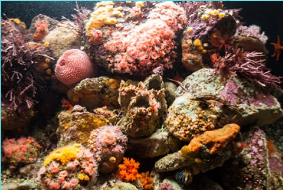
5 Cool Tools for Cleaning a Dirty Reef Tank
From vibrant coral to multi-colored fish, a well-maintained saltwater aquarium can be a sight to behold. But as any aquarium owner knows, keeping your reef tank clean takes a significant amount of work, and finding the right tools is half the battle. Look for these aquarium tools:
Algae Magnet: This is one of the most popular cleaning tools for reef tank owners. It consists of two parts-the first is placed inside the tank under the water and the second on the outside of the tank against the glass. As you move the magnet through the water, you will scrape algae off the inside of the fish tank and grime off the exterior glass.
Long-Handled Tank Scraper: Although algae magnets are excellent for cleaning most of the tank, there will still be some areas you simply can't reach. For those cracks and crevices, a long-handled scraper works best. For the best results, look for a scraper with replaceable and interchangeable blades.
Reef tank Siphon: This is a must-have for all aquariums. Siphons allow you to suck up debris and waste products with ease. They're also great for cleaning rocks and gravel.
Bulb Syringe or Turkey Baster: These tools are used for feeding corals, which help maintain the ecosystem within your tank. Using the syringe or baster for spot-feeding other fish also helps reduce the amount of food waste floating around the tank or settling at the bottom, which can make your aquarium look dirty.
Refractometer: Refractometers monitor the salinity of your saltwater aquarium. Keeping your reef tank's salt levels at the optimum level is essential for the health of your fish and coral. The readings will also help you spot potential problems with your auto top-off system, which could have dire consequences for your entire tank system.
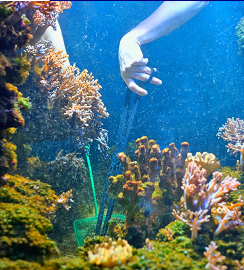
How to Control Phosphate in a Reef Tank
When it comes to owning a saltwater aquarium, phosphate plays an important role in growing and maintaining the coral life in your reef tank. Fish, it's crucial to understand how to control the phosphate levels in your aquarium. Phosphates are the essential nutrient source for many forms of algae. If the levels in your reef tank are too concentrated, this could cause more aggressive species of algae to grow and harm the rest of the life in your saltwater aquarium. You can use either unfiltered tap water or special aquarium products to introduce phosphates to your reef tank.
To control the phosphate, it's important to purchase a testing kit so you can always be aware of the phosphate levels in your tank. If you find that the level is too high, there are several ways to reduce the concentration. Adding a limewater or kalkwasser solution can reduce the phosphate by a significant percentage. There are also commercial products on the market designed to specifically lowers phosphate levels.
In addition to these products, it's essential to perform regular maintenance care for your aquarium routinely changing the water. Not only does this help to control phosphates, but it may also reduce DOCs, nitrates, and other unwanted chemicals in saltwater systems that contribute to water quality problems.
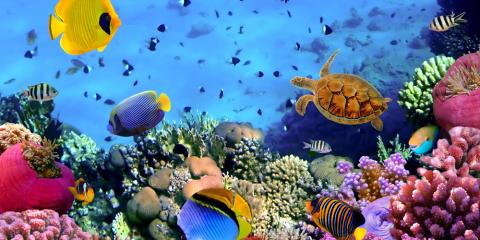

How to Set Up a Reef Tank
Decorated with coral and saltwater fish, reef tanks can be some of the most visually-interesting aquariums to maintain. But while they are incredibly rewarding, reef tanks can be more intensive to set up than a freshwater aquarium. 5 Steps to Follow When Setting Up Your Reef Tank
1. Research & Shop
Before you buy a fish tank and any equipment, you should carefully research the type of coral and fish that you'd like to keep. To keep things simple, start by choosing species that require similar conditions and can cohabitate peacefully. Find out what tank size, filtration, lighting, and other features are best for your choice of inhabitants. Form a checklist of everything you'll need and seek help from an aquarium shop to make sure you're getting the right materials.
2. Add Saltwater & Live Rock
Once you've purchased a tank and have it placed, add sand to the bottom and prepare saltwater according to the product instructions. Next, cure the live rock by rinsing it in a bucket of the mixed saltwater. Once the rocks are clean, arrange them as desired in the tank.
3. Install Equipment
While there may not be any living material in your aquarium just yet, you'll need to spend a few weeks conditioning the water. Make sure the skimmer and filtration systems are set up to ensure consistent water movement. Perform water testing and changes regularly and adjust the pH to hit the target range of 8.1 to 8.4.
4. Add Coral in Stages
When the water is conditioned, add any creatures that can help combat algae-such as crabs and snails. In the next two weeks, you can introduce your beginner corals to the live rock and allow them to acclimate. When another two weeks have passed, you can place aquacultured corals and adjust them according to the instructions.
5. Welcome New Fish
After all the coral has been established for about two weeks, you can introduce desired saltwater fish in stages. Work with a trusted fish store to make sure you understand the right water change, feeding, and introduction timelines for the intended species.







